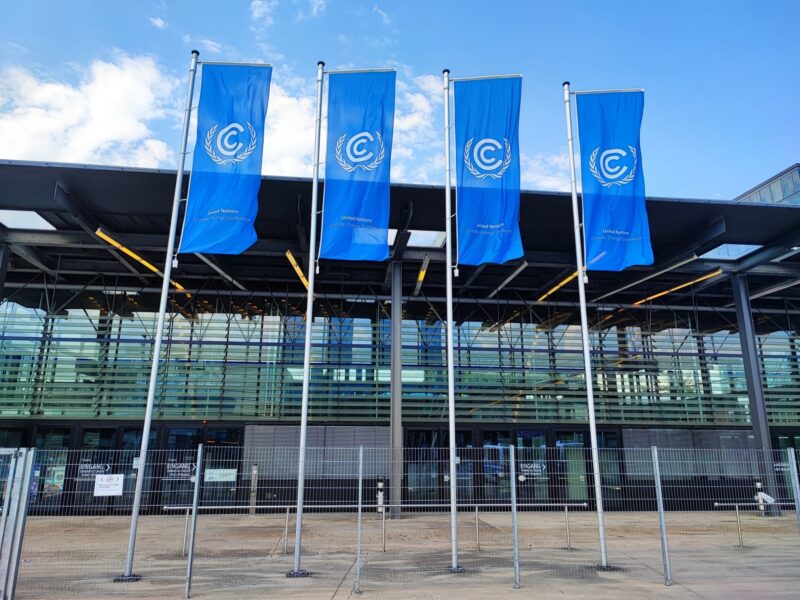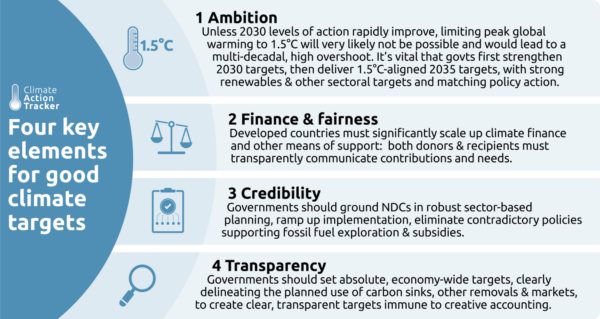Guide to a good 2035 climate target
Authors
Sofia Gonzales-Zuñiga, Jane Ellis, Bill Hare, Maria Jose de Villafranca Casas, Catrina Godinho, Niklas Höhne

For a second year in a row, the world continues to break temperature records as greenhouse gas emissions rise, leading to more extreme heat and flooding events that are taking lives and displacing many around the globe. Governments are expected to submit their climate targets - or new Nationally Determined Contributions (NDCs) - by early 2025, with targets for 2035.
However, the Climate Action Tracker (CAT) analyses have continued to show that both individual country and collective mitigation ambition for 2030 targets is not in line with the level of action needed to limit warming to 1.5°C. Of even more concern: governments are not implementing enough policies and actions to meet even those insufficient targets.
From November this year, national governments need to submit 1.5°C aligned 2035 NDC targets but for the world to meet the Paris Agreement’s 1.5˚C temperature goal, they need to move to emergency mode and strengthen the ambition of their 2030 NDC targets and current policy action. Targets and action for 2030 needs to align with the pathway to net CO2 zero emissions by 2050 globally, which should also then define the NDC targets for 2035.
A failure to substantially increasing the ambition of current 2030 targets and action would mean limiting peak global warming to 1.5°C will not be possible and would likely lead to a multidecadal, high overshoot of this limit, even if followed by strong 2035 targets.
In this briefing, the CAT highlights four key elements for what is needed from the next round of NDCs for 2035: they need to be ambitious, fair, credible, transparent, and include aspects of climate finance and a just and fair transition.












